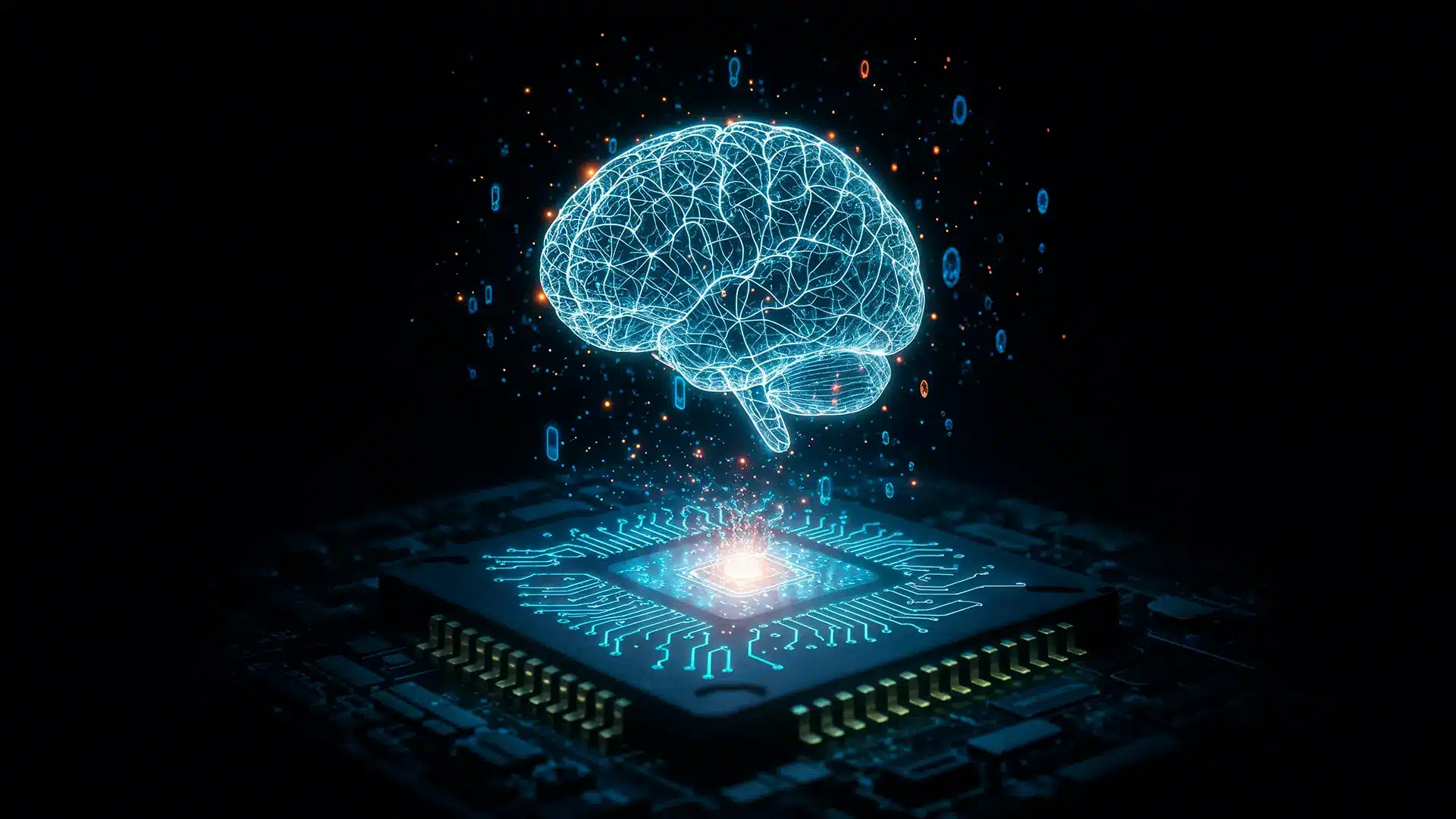Trending: Here are some Business Statistics and Trends to know

Machine learning (ML) is revolutionizing the way computers solve problems and perform complex tasks by enabling them to learn from data rather than relying solely on explicit programming. This transformative technology is at the heart of many modern innovations, including voice assistants, recommendation systems, autonomous vehicles, and advanced medical diagnostics.
In this blog, we will explore what machine learning is, its various types, key algorithms, real-world applications, and the prospects of this rapidly evolving field.
Whether you’re a beginner or looking to deepen your understanding, this comprehensive overview will guide you through the fundamentals and significance of machine learning in today’s digital landscape.
Introduction to Machine Learning
Machine learning (ML) is a powerful subset of artificial intelligence (AI) that enables computer systems to learn from data and improve their performance on specific tasks without requiring explicit programming.
Over time, machine learning has shifted its focus from the pursuit of general artificial intelligence to solving practical problems, such as data compression and pattern recognition, and leveraging statistical methods for real-world applications.
Unlike traditional computer programming, where explicit instructions are written for every possible scenario, machine learning technology empowers machines to identify patterns and make decisions based on training data.
The way machines learn has evolved from early symbolic and knowledge-based approaches to modern statistical and pattern recognition techniques, which are now widely utilized in practical applications such as image processing and data analysis.
This learning system allows computers to adapt and enhance their capabilities over time, making them increasingly effective at performing complex tasks autonomously.
Machine learning models are built by training algorithms on historical data, which helps the system recognize underlying patterns and relationships.
Once trained, these models can make predictions or classifications on new data, enabling real-world applications such as fraud detection, predictive maintenance, and customer segmentation.
The continuous influx of more data allows these models to refine their accuracy and effectiveness, making machine learning a cornerstone of modern data science and computer science.
Types of Machine Learning
Machine learning encompasses several types, each with unique approaches to learning from data:
Supervised Machine Learning
Supervised learning algorithms are trained on labeled data, meaning the input data is paired with the correct output. During the training process, the model learns to map input data to the desired output, enabling it to classify data or predict numerical values accurately.
The cross validation process is often used during supervised learning to fine-tune model parameters and prevent overfitting, ensuring the model generalizes well to new data.
Supervised learning algorithms include linear regression, support vector machines, and deep neural networks. This type of learning is widely applied in various fields, including quality control, speech recognition, and fraud detection.
Unsupervised Machine Learning
In unsupervised learning, the machine learning algorithm is trained on unlabeled data, without predefined categories or outcomes. Unsupervised learning excels at identifying patterns in large datasets without explicit instructions.
The goal is to identify hidden patterns, clusters, or relationships within the data. Techniques such as clustering and dimensionality reduction are standard unsupervised methods.
Unsupervised machine learning is valuable for exploratory data analysis, customer segmentation, and anomaly detection.
Reinforcement Learning
Reinforcement learning involves training machine learning models to make a sequence of decisions by interacting with an environment.
The model receives feedback in the form of rewards or penalties, learning to optimize its actions to maximize cumulative rewards over time. This approach is used in robotics, autonomous vehicles, and game playing AI systems.
A self-driving car is a prime example of reinforcement learning, as it learns to navigate and make driving decisions through trial and error in real-world environments.
Semi-Supervised Learning
Semi-supervised learning combines aspects of both supervised and unsupervised learning. It utilizes a small amount of labeled data in conjunction with a larger set of unlabeled data to enhance model accuracy.
This approach is beneficial when acquiring labeled training data is costly or time-consuming.
Machine Learning Algorithms
Machine learning algorithms are the core techniques used to train models on input data. Various machine learning techniques are used to analyze data, make predictions, and support decision-making processes. The choice of algorithm depends on the nature of the problem and the characteristics of the data.
These algorithms enable machine learning systems to perform tasks such as classifying data, recognizing speech, and analyzing images. A machine learning model is the end product of training an algorithm, representing the learned patterns and relationships used for prediction or classification.
Below are some of the most common machine learning algorithms, explained in detail:
Linear Regression
Linear regression is one of the simplest and most widely used algorithms in machine learning. It is used for predicting numerical values based on the relationship between one or more input variables (features) and a continuous output variable.
The algorithm fits a linear equation to the observed data points, minimizing the difference between predicted and actual values. Linear regression is commonly applied in forecasting tasks such as predicting house prices, sales, or other trends based on historical data.
Decision Trees
Decision trees are rule-based models that split data into branches based on feature values, ultimately leading to a decision or prediction.
Each internal node represents a test on an attribute, each branch represents the outcome of the test, and each leaf node represents a class label or regression value.
Decision trees are intuitive and easy to interpret, making them popular for classification and regression tasks. They are often used in quality control, customer segmentation, and risk assessment.
Support Vector Machines (SVM)
Support Vector Machines are powerful supervised learning algorithms used primarily for classification tasks.
SVMs work by finding the optimal hyperplane that separates data points of different classes with the maximum margin. This boundary helps the model generalize well to unseen data.
SVMs can also handle non-linear classification by using kernel functions to map input data into higher-dimensional spaces. They are widely applied in image recognition, text classification, and bioinformatics.
Random Forest
Random forest is an ensemble learning method that combines multiple decision trees to improve prediction accuracy and reduce overfitting.
Each tree in the forest is trained on a random subset of the data and features, and the final prediction is made by aggregating the outputs of all individual trees (e.g., majority vote for classification or averaging for regression).
Random forests are robust and versatile, commonly used in fraud detection, medical diagnosis, and financial forecasting.
Deep Learning Models
Deep learning models utilize artificial neural networks composed of multiple layers, often referred to as deep neural networks. The concept of a neural network was inspired by the structure and function of the human brain, with interconnected layers mimicking biological neurons.
These models are capable of capturing complex patterns and relationships in large datasets by processing data through interconnected layers of neurons. The architecture of artificial neural networks is modeled after the way the human brain processes and transmits information. Deep learning excels in handling both structured and unstructured data, such as images, audio, and text.
Applications of deep learning include computer vision, natural language processing, speech recognition, and autonomous vehicles. Training deep learning models requires significant computational power and large amounts of training data.
Each of these machine learning algorithms has strengths and limitations, and the choice of which to use depends on the specific problem, data type, and desired outcome. Combining algorithms and tuning their parameters can further enhance model performance in real-world applications.
Deep Learning and Artificial Neural Networks
Deep learning is a specialized branch of machine learning that employs artificial neural networks inspired by the human brain’s structure. These networks consist of layers of interconnected nodes or neurons that process and transmit information.
Deep learning models excel at handling large volumes of structured and unstructured data, making them ideal for applications like computer vision, natural language processing, and robotics.
Artificial neural networks learn by adjusting the weights of connections between neurons during the training process, allowing them to model complex, non-linear relationships.
The computational power required for training deep learning models is significant, often necessitating specialized hardware such as GPUs or TPUs.
Data Analytics in Machine Learning
Data analytics is at the heart of machine learning, providing the foundation that allows machines to learn from experience and improve over time. In the world of machine learning, the quality and depth of insights extracted from data directly influence the effectiveness of machine learning models. The process begins with gathering and preparing large volumes of training data, which is then meticulously processed and analyzed to uncover meaningful patterns and relationships.
Through data analytics, machine learning algorithms can identify patterns within complex datasets, transforming raw information into actionable insights. This analytical process is essential for training machine learning systems, as it enables learning algorithms to recognize trends, anomalies, and correlations that would be difficult or impossible to detect manually.
Once the data has been analyzed, it serves as the backbone for training machine learning models to perform complex tasks such as natural language processing, predictive maintenance, and image recognition.
By continuously analyzing new data, machine learning systems can adapt to changing conditions, refine their predictions, and enhance their overall performance. In essence, data analytics empowers machine learning to move beyond static programming, enabling machines to learn, adapt, and excel in a wide range of real-world applications.
Difference Between Machine Learning and Artificial Intelligence (AI)
Artificial intelligence is a broader concept encompassing the development of computer systems capable of performing tasks that typically require human intelligence. Machine learning is a subset of AI that focuses specifically on enabling machines to learn from data and improve over time through the use of algorithms and statistical models.
While all machine learning is part of AI, not all AI systems use machine learning. For example, rule-based systems and expert systems fall under AI but may not involve learning from data. Machine learning programs are central to many AI systems today, powering applications across various industries.
Applications of Machine Learning
Machine learning has a wide array of applications across industries, leveraging its ability to analyze vast datasets and automate complex processes.
A machine learning system can identify patterns and trends in data, continually improve its performance over time as it receives new data, and often functions with minimal human intervention in various real-world applications. These applications are transforming how businesses operate and deliver services, making processes faster, more accurate, and more efficient.
Computer Vision
Computer vision enables machines to interpret and process visual information from the world around them. It is widely used in facial recognition systems for security and authentication, medical imaging to assist in diagnosis, and autonomous vehicles to perceive and navigate environments safely.
By analyzing images and videos, computer vision models can detect objects, recognize patterns, and even comprehend scenes in real-time.
Natural Language Processing (NLP)
Natural Language Processing powers machines to understand, interpret, and generate human language. This technology is behind speech recognition systems, such as virtual assistants, language translation services that break down communication barriers, and chatbots that provide automated customer support.
NLP applications help businesses engage with customers more effectively, enabling seamless human-computer interactions.
Predictive Analytics
Predictive analytics uses historical and real-time data to forecast future trends, customer behavior, and financial market movements.
Machine learning models analyze vast amounts of data to identify patterns and make predictions that inform decision-making in areas such as marketing strategies, inventory management, and risk assessment. This helps organizations anticipate needs and optimize their operations proactively.
Fraud Detection
Fraud detection systems utilize machine learning to identify suspicious activities by analyzing transaction patterns in banking, e-commerce, and insurance.
These models continuously learn from new data to detect anomalies, reducing financial losses and protecting consumers. Machine learning enhances the speed and accuracy of fraud detection compared to traditional rule-based systems.
Robotic Process Automation (RPA)
Robotic Process Automation combines machine learning with automation to handle repetitive and rule-based business tasks.
RPA bots can efficiently process invoices, manage customer queries, and update records, freeing human workers to focus on more strategic activities. Integrating machine learning enables RPA systems to handle more complex tasks by learning from data and adapting to new scenarios.
Predictive Maintenance
Predictive maintenance uses sensor data and machine learning to anticipate equipment failures before they occur.
By monitoring the condition and performance of machinery, these models enable the scheduling of timely maintenance, reduce downtime, and extend asset life. This application is crucial in manufacturing, transportation, and energy sectors where equipment reliability is vital.
These diverse machine learning applications demonstrate their transformative impact in solving real-world problems, enhancing operational efficiency, and driving innovation across industries.
Real-Life Examples of Machine Learning Applications
Machine learning has become an integral part of many everyday technologies and industries, driving innovation and improving efficiency. Here are some notable real-life examples of machine learning applications:
Healthcare
Machine learning models analyze medical images to assist doctors in diagnosing diseases such as cancer or detecting abnormalities early. Predictive analytics enable hospitals to forecast patient admission rates and optimize resource allocation for improved care.
Finance
Banks utilize machine learning algorithms for fraud detection by analyzing transaction patterns in real-time to flag suspicious activities. Automated trading systems leverage machine learning to predict stock market trends and execute trades with minimal human intervention.
Retail and E-commerce
Recommendation engines powered by machine learning analyze customer browsing and purchase history to suggest personalized products, enhancing user experience and boosting sales. Inventory management systems predict demand trends to prevent overstocking or stockouts.
Autonomous Vehicles
Self-driving cars rely on deep learning models to process sensor data, recognize objects, and make driving decisions. These systems continuously learn from vast amounts of driving data to improve safety and navigation.
Customer Service
Chatbots and virtual assistants utilize natural language processing and machine learning to efficiently understand and respond to customer queries, providing 24/7 support and freeing human agents for more complex tasks.
Cybersecurity
Machine learning helps identify and respond to cyber threats by detecting unusual network activities and potential vulnerabilities, enhancing the security posture of organizations.
These examples illustrate how machine learning technology is revolutionizing various sectors by automating complex tasks, enhancing decision-making, and delivering more personalized experiences.
Future of Machine Learning
The future of machine learning promises continued advancements in algorithms and models that can learn from more data and handle increasingly complex tasks.
As computing power continues to grow and data availability expands, machine learning systems will become increasingly sophisticated, supporting innovations in healthcare, finance, transportation, and beyond.
Emerging trends include the integration of machine learning with other AI subfields, the development of explainable AI to improve transparency, and the ethical deployment of machine learning programs to mitigate biases.
The ongoing collaboration between data scientists, machine learning researchers, and computer scientists will drive the evolution of this dynamic field, shaping the future of intelligent systems worldwide.
Frequently Asked Questions (FAQ) about Machine Learning
What is machine learning (ML)?
Machine learning (ML) is a subset of artificial intelligence that enables computer systems to learn from data, identify patterns, and improve their performance on specific tasks without being explicitly programmed. Some machine learning algorithms, such as Naïve Bayes, use prior knowledge or existing information to improve their predictions or classifications. It allows machines to make predictions or decisions based on training data and adapt over time with more data.
How does machine learning differ from artificial intelligence (AI)?
Artificial intelligence is a broader concept that encompasses any technique enabling machines to simulate human intelligence. Machine learning is a specific approach within AI that focuses on building systems that learn from data and improve automatically without explicit instructions.
What are the main types of machine learning?
The primary types of machine learning include supervised learning (learning from labeled data), unsupervised learning (finding hidden patterns in unlabeled data), reinforcement learning (learning through rewards and penalties in an environment), and semi-supervised learning (combining labeled and unlabeled data).
What are common machine learning algorithms?
Common algorithms include linear regression, decision trees, support vector machines (SVM), random forests (an ensemble method), and deep learning models that use artificial neural networks with multiple layers.
What are some real-world applications of machine learning?
Machine learning is widely used in computer vision (e.g., facial recognition), natural language processing (e.g., speech recognition and chatbots), predictive analytics, fraud detection, robotic process automation, and predictive maintenance across many industries.
What kind of data is used in machine learning?
Machine learning models are trained on structured data, organized and labeled datasets essential for supervised learning models, as well as unstructured data, including labeled datasets for supervised learning and unlabeled data for unsupervised learning. The quality and quantity of data have a significant impact on model performance.
Does machine learning require human intervention?
While machine learning systems can learn and improve autonomously, human intervention is often necessary for tasks such as data preparation, feature engineering, model selection, and evaluation to ensure accuracy and fairness.
What is the future of machine learning?
The future holds advancements in algorithms, integration with other AI fields, the development of explainable AI to enhance transparency, and the consideration of ethical implications to mitigate biases. Machine learning will continue to transform industries by enabling more intelligent and autonomous systems.



